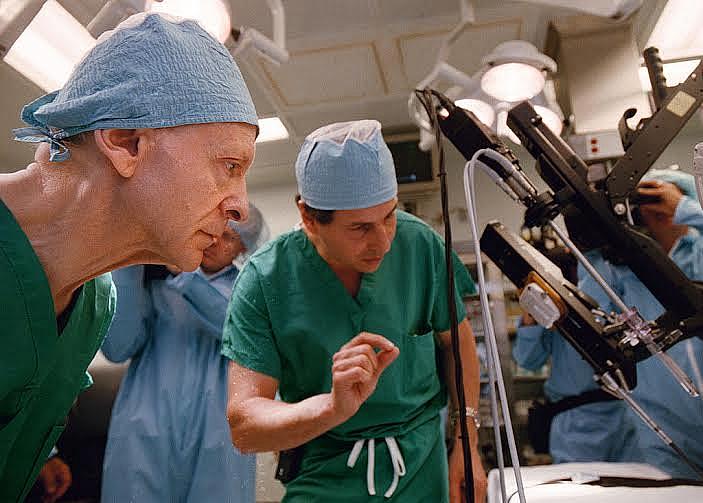Ten predictions on how medicine will change in coming decades (Part 2)

Photo: Chris Hondros / Getty Images
Recently, I discussed five of my predictions for the next decades of American health care and medicine in this blog.
Although personal technology changes at light speed, with production and adoption of new iPhone models constantly underway, medical technology hasn’t always kept up, and certainly isn’t always as slick. Electronic health records are cumbersome and slow doctors down. Most patients don’t use health apps. But there are a few potential rays of light for the future of medicine that do involve technology. In this post, we are moving on from shortages of smart doctors and the rise of concierge care to some new areas of intrigue for the future.
1. Better blood testing for all? Absolutely. A new company will rise from Theranos’ ashes. While Theranos has made a muck of itself by overstating its accomplishments to hungry technology reporters, the drop-of-blood lab testing company will either get its science straight or inspire another company to make lab tests faster, cheaper, and less vampiric. Consumer interest in lab testing has increased as major labs like LabCorp have made their testing available without a doctor’s authorization (although not covered by insurance), and based on my anecdotal experiences as a physician, patients are more interested in ordering their own tests. Let’s look forward to them being less onerous. Meanwhile, Elizabeth Holmes, the Theranos CEO, may well be coming to a screen near you as Jennifer Lawrence.
2. Robots will rule. Look for operating-room robots to retract muscle and fat while surgeons work — and for nanobots to deliver targeted medicine like chemotherapy and perhaps even dissolve blood clots and treat infections deep inside the body. Much of the surgical error in operating rooms is frustratingly human—a left sponge there, contaminated gloves here, a sleepy surgeon anywhere. Robots can eliminate a staggering amount of that error. Atul Gawande would approve.
3. Telemedicine will finally become commonplace. Currently, most patients are used to visiting their doctors in person, while a niche group of early adopters enjoys the convenience of remote ear infection diagnosis and psychotherapy over the internet. Look for workers using their lunch hours to pop into a conference room and “see” the doctor on their smartphones. That could also mean fewer missed classes and work days spent on doctor visits, a huge problem for many patients as Vox’s Sarah Kliff recently explained.
4. Better medicine through genetic testing. Screening reveals polymorphisms, or genetic quirks that made some medications appropriate for certain patients and potentially deadly for others. Patients will arrive at doctor’s offices already knowing that their bodies “waste” Prozac or that blood thinner Plavix accumulates inappropriately. This will mean smarter prescribing and less trial and error of medications — and fewer overdoses and side effects.
5. A hard clamp down on antibiotic use. For years, doctors’ pleas to patients to stop asking for unnecessary antibiotics have been ignored. A lot of them give in and hand over the amoxicillin or azithromycin, wasting clinic time, patients’ co-pays, and healthy gut bacteria. Now, with completely untreatable superbugs proliferating among us, hospital and clinic systems will be doing more to discourage doctors from promoting antibiotic resistance.
Many of these trends are long overdue, but awareness is growing thanks to the rise of social media (for example, the growing number of posts and links about drug-resistant bacteria; the outreach effort by the White House Precision Medicine Initiative). The more patients and doctors speak out about these issues, the more forward progress we will see.
**
Related post
Ten predictions on how medicine will change in coming decades (Part 1)

